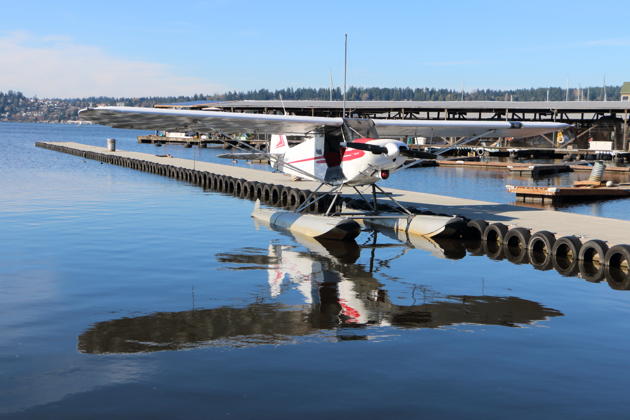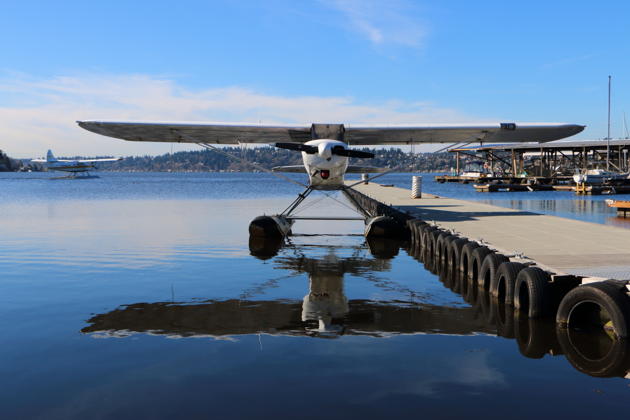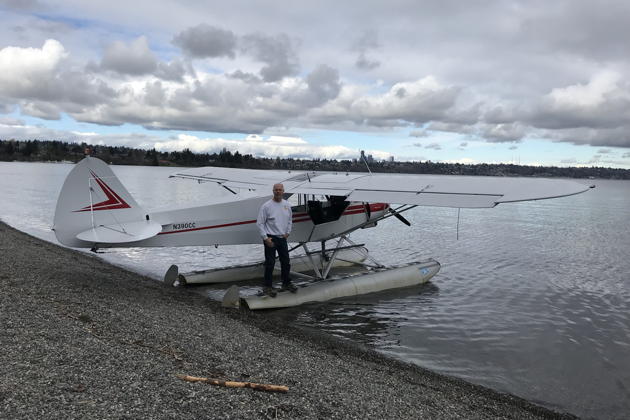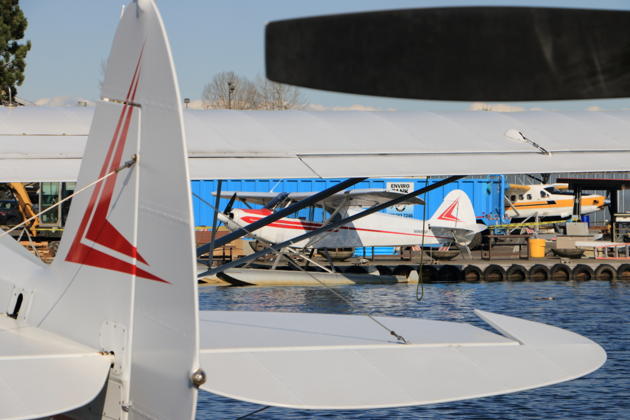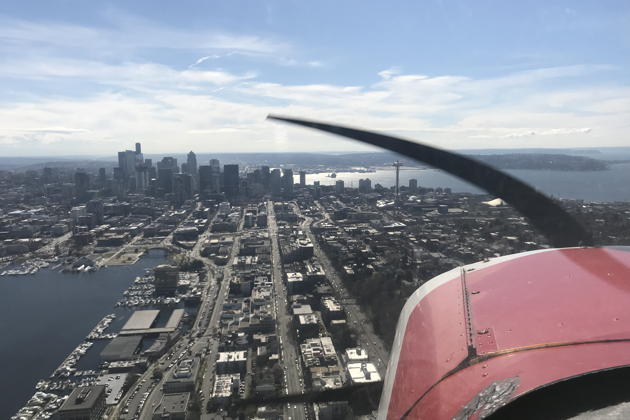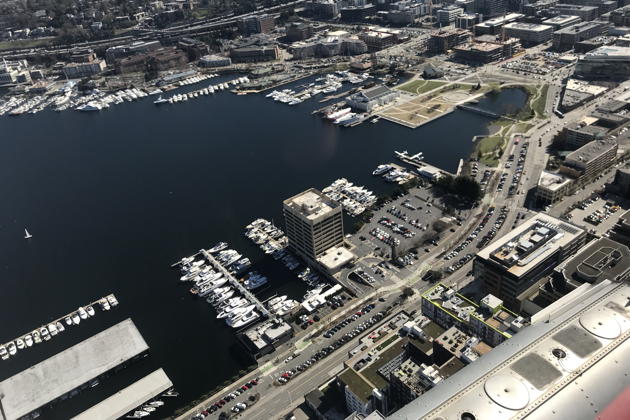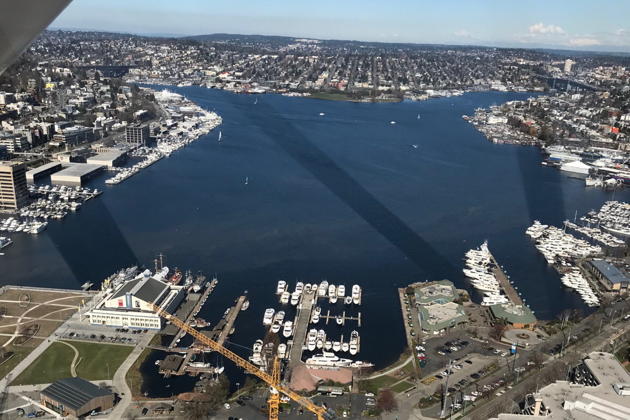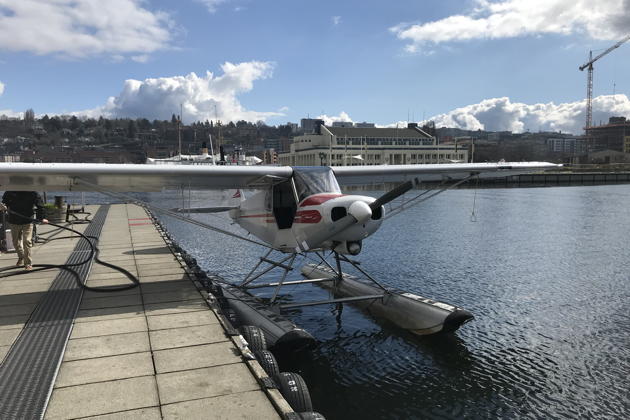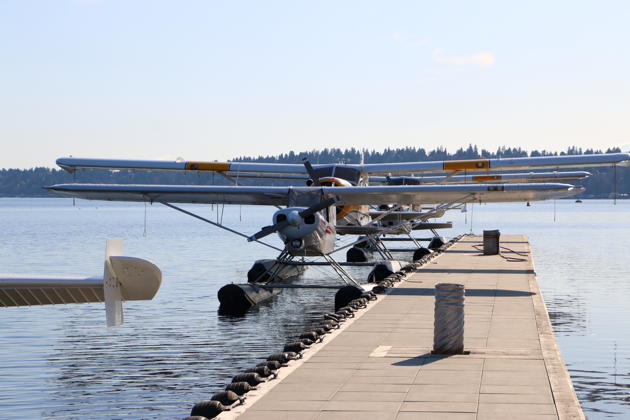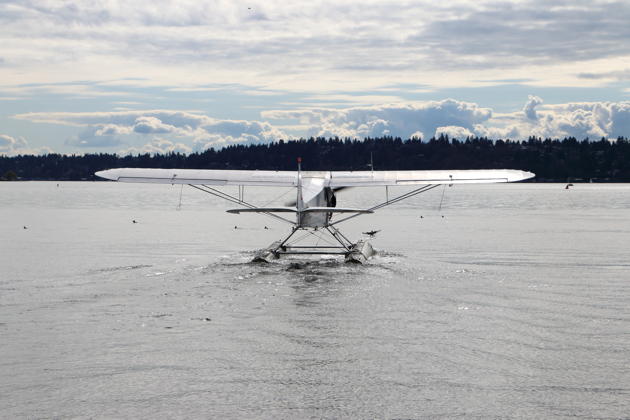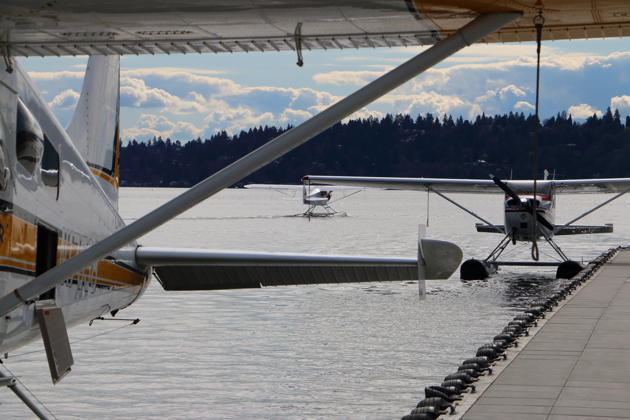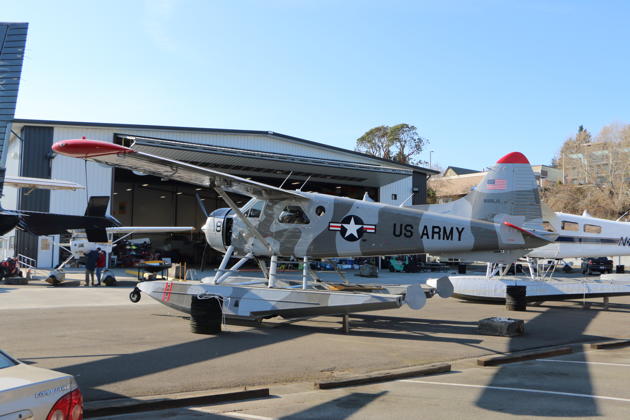FlightLog Archive
∟Aircraft Flown
Flying the Cub on Floats - Mar 2018
After numerous recent flights in beautiful seaplanes, such as Doug Happe's Lake Renegade, Tom Hoag's classic Seabee, an Icon A5, and an invitation to fly the Gweduck, it was time to get serious about my own training, and work toward a Commercial Single Engine Sea (SES) add-on to my ratings.
The Pacific Northwest has a huge population of seaplanes, with the numerous available fresh and saltwater lakes, the Puget Sound waterways, and amazing mountain lakes. I researched training options for a seaplane rating, and Kenmore Air Harbor was often cited as an excellent option for seaplane training. Since Kenmore was relatively close by, and with options to train in either Piper Super Cubs or a Cessna 172, I signed up for their 10-hour training course to learn the right way. The Super Cub was my preferred airplane, since it has a stick instead of a yoke, and a throttle on the left side of the cockpit, the perfect combination.
Before the course began, the Kenmore Instruction office provided seaplane study materials, including the FAA's Seaplane Handbook (FAA-H-8083-23), a study guide for the Flight Test oral examination, and a Kenmore Super Cub flight operations guide. Although I had signed up for the course in the beginning of the year, the Super Cub that I wanted to fly was just coming up for its 100-hour inspection, so a class start of mid-March was planned, which hopefully would provide a string of decent weather over the normal late winter Seattle rains.
My first flight was in a CubCrafters Super Cub equipped with a 180-HP O-360, which was noted as a bit of cheating, since that Cub has so much power it leaps off the water. I flew my first instruction flight with Sean Brady, an instructor who was also flying the Beaver on Kenmore's passenger flights. Sean gave me a great introduction to normal and glassy water takeoffs and landings, letting me develop an initial sight picture for the step in the Cub. We flew a series of touch and goes down the northern length of Lake Washington and back, which was a good exercise on step recognition, pitch attitude and power management.
Over the next four days, which were the last four days of winter, I had perfect spring-like weather with mostly sunny skies, light winds and great water conditions for training, and flew both the 150-HP and 180-HP Super Cubs. I was able to fly twice a day, each day, with two different instructors, Garrett Caldwell and Jeff Coleman, practicing normal, rough and glassy water operations, step taxiing, power off landings, and confined area takeoffs and landings. Since the local Kenmore fuel system was being refurbished, I also got to experience operations into and out of Kenmore's Lake Union facility, enjoying the sights and precision operations required to fly from that tight urban waterway. On the last training day, Garrett and I practiced beaching at Seward Park, which was surprisingly easy. We only stayed on the beach for a quick photo, since passers by quickly started gathering to check out our visit.
On the first day of spring, the weather was again perfect for my Commercial Single Engine Sea (SES) check flight with Fred Brink, a designated examiner who also works for Kenmore Air. On the busy check flight, I got to demonstrate a normal pre-flight and castoff, step taxiing, a normal water takeoff, glassy and simulated rough water takeoffs and landings. Due to the extra power available with the 180-HP Super Cub, Fred had me demonstrate a reduced power (~1900-2000 RPM) takeoff, lifting the right float off first to reduce the drag. We had a simulated engine failure, then a spot landing abeam a buoy just south of Sand Point. I flew a series of simulated rough water/slow speed landings and takeoffs en route northbound back to Kenmore, followed by a nice docking and check completion.
If you have a desire to experience seaplane flying, I highly recommend the seaplane course at Kenmore for professional, informative training. I'm now hooked on the air AND water, and ready for more!
 KASPRZYK
KASPRZYK
